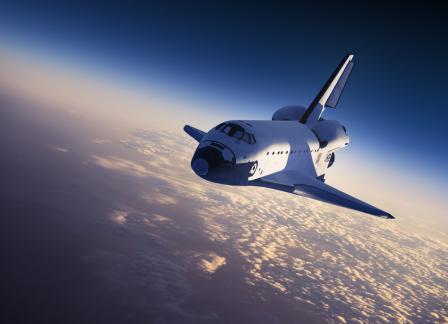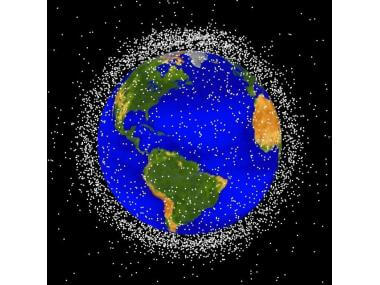Will Commercial Companies Be the Next to Take on Space Travel?
Would you sign up if the founder of Amazon offered to send you into space? How about the man behind PayPal or the engineers at Boeing? Let’s explore some of the commercial companies who are the major players in NASA’s efforts to once again send crewed missions into space.
In July of 2011, NASA terminated its space shuttle program. Any efforts to transport people, supplies, or science experiments to the International Space Station (and of course, beyond) now rely on the Russian Soyuz capsule, a rental that costs in the neighborhood of $70 million a trip.
So NASA was faced with a financial challenge: how could they keep the space program going without owning and maintaining the vehicles themselves or relying on the Russian program which is ultimately a competitor in the space race?
Thus the commercial crew initiative was born. NASA began entering into contracts with private companies developing their own vehicles for the transportation of supplies, and eventually crews, into space. The companies then retain the intellectual property for their designs and, of course, the vehicles themselves, but the price tag for NASA drops from the billions of dollars needed to build and maintain a shuttle to what was an initial investment of around $500 million. (Although, as we shall see, that number has now far been surpassed.)
Not everyone at NASA was convinced that allowing commercial companies to dock at the roughly $100 billion International Space Station (ISS for short) was a good idea, especially since it often serves as home for international astronauts, but commercial companies have now been ferrying supplies and science experiments to the ISS since the SpaceX Dragon spacecraft first accomplished the task in 2012.
NASA maintains a site explaining all of the ongoing science experiments on the ISS, experiments that benefit either from the microgravity environment or from an outsider’s perspective on the Earth. For example, the HICO spectrometer onboard the ISS is used to monitor the quality of U.S. drinking water by monitoring the coastlines of oceans as well as the Great Lakes for harmful algae or oil spills.
Other companies, like Planet Labs, Inc., uses the ISS as a launching point for their fleet of nanosatellites, which work to map the Earth near the equator where most of the world’s population and agriculture is located. They monitor issues like deforestation, urbanization, and agricultural yields at a more frequent rate than any existing government or commercial satellites.
Private companies have also been contracted to launch government satellites into space, like the DSCOVR satellite, short for Deep Space Climate Observatory, a partnership between NASA, the National Oceanic and Atmospheric Administration (NOAA) and the U.S. Air Force. SpaceX delivered the satellite, which will monitor the Sun for potentially dangerous solar storms, into orbit earlier this year.
The next step in NASA’s commercial crew initiative is the transport of not just supplies but also crew members. Although that may sound like a daunting task, the most optimistic predictions have commercial space flight companies delivering NASA astronauts to the ISS as early as 2017! Both Boeing and Space Exploration Technologies Corporation (better known as SpaceX) have received paid contracts from NASA to deliver manned (and woman-ed!) missions to the ISS.
Boeing and the CST-100 Spacecraft
The Boeing Company, a major player in both the commercial and defense aircraft design industries, received the first commercial order from NASA to the tune of $4.2 billion to develop its CST-100 (for Crew Space Transportation) space taxi. The capsule fits seven passengers and is designed to be reused up to 10 times. The vehicle further is designed to do all of its docking autonomously so that less training time is required for any potential crew.
SpaceX and the Dragon Crew Spacecraft
SpaceX, the space exploration company founded by PayPal and Tesla’s Elon Musk, was the first private company to deliver cargo to the ISS and became the second to receive a contract from NASA for $2.6 billion to ready its Dragon Crew spacecraft to carry astronauts as well.
Both the Boeing and SpaceX contracts will require that each company demonstrate that their spacecraft can launch, maneuver in orbit, and dock at the ISS in order to receive certification from NASA. Once certified, NASA expects to conduct between two and six crewed trips to the ISS per spacecraft. In case of an emergency, the spacecraft could also potentially be used for life saving missions for the ISS astronauts.
A key component to making the exploration of space sustainable is designing spacecraft that are reusable.
A key component to making the exploration of space sustainable is designing spacecraft that are reusable. Many are destroyed once they are sent hurtling back to Earth and so it has been a challenge to re-land rockets on Earth once their space missions are completed. SpaceX came very close to landing its Falcon 9 rocket on a floating platform in April 2015, but ultimately was unsuccessful.
Amazon Founder and CEO Jeff Bezos and Blue Origin
Another space exploration effort making headlines in the area of reusability is that led by Amazon founder and CEO Jeff Bezos. In late November of 2015, in his first tweet, Bezos announced that his new company, Blue Origin, had successfully landed its New Shepard vehicle safely on Earth after a space flight. New Shepard reached Mach 3.72 and an altitude of just shy of 330,000 ft (or just over 100.5 kilometers). Upon return, the vehicle was slowed to ~4 miles per hour before touching back down on terra firma.
Although the landing proved an extremely impressive feat, so far the Blue Origin rocket has only been used as a suborbital spacecraft and thus is not yet powerful enough to put people into space. For comparison, the SpaceX vehicles are designed to reach distances of >90,000 kilometers as opposed to the 100 kilometers traveled by New Shepard.
However, it is clear that Blue Origin is likely headed that way. Bezos ended his announcement of the historic event with the latin phrase Gradatim Ferociter which can be translated as “step by step, ferociously”. Blue Origin has a nonfunded contract NASA to continue to develop their reusable rockets, and Bezos has said that he looks forward to having a press conference in space in the future.
Others Players in the Commercial Space Flight Industry
The commercial space flight industry is growing and evolving extremely fast, especially given the patience (and substantial initial investment) required to turn an eventual profit. The space tourism start-up, Virgin Galactic, founded by Virgin mogul Richard Branson has made plans to take paying customers 62 miles into the stratosphere for a bargain price of $250,000 a ride. So far >700 customers have signed up despite there being to timeline for the travel to start. (The company also had a setback with the fatal crash during a test flight of their Spaceship Two in October of 2014.) Planetary Sciences, an effort backed by Google’s Larry Page and Eric Schmidt, aims to send missions to asteroids in order to mine them for elements and minerals that are rare on Earth.
In addition to its crew contract, Boeing further has a joint venture with Lockheed Martin called the United Launch Alliance, which has several government contracts to launch national security satellites. They are developing a new, cheaper Vulcan rocket expected in 2019. The ULA also successfully launched a GPS satellite in November, so we likely have them to thank next time we punch an address into our smart phone to get directions.
As even more companies focus on more nearby space exploration efforts, including Orbital ATK’s Antares rocket to supply the ISS and Lockheed Martin’s Orion spacecraft with the eventual goal of deeper space exploration, NASA is free to focus on longer mission goals, like the travel of humans to Mars. In fact, NASA administrator Charles Bolden recently announced that astronaut applications would be accepted starting December 14, 2015 (that’s today!) for those wanting to make space travel history. Are you up for it?
Until next time, this is Sabrina Stierwalt with Ask Science’s Quick and Dirty Tips for helping you make sense of science. You can become a fan of Ask Science on Facebook or follow me on Twitter, where I’m @QDTeinstein. If you have a question that you’d like to see on a future episode, send me an email at everydayeinstein@quickanddirtytips.comcreate new email.







